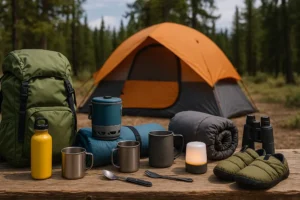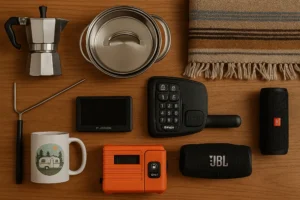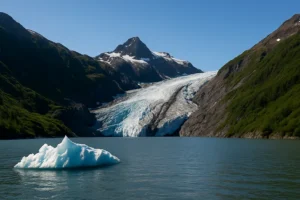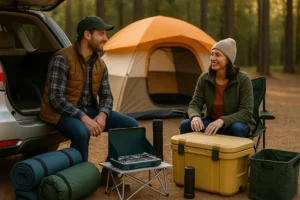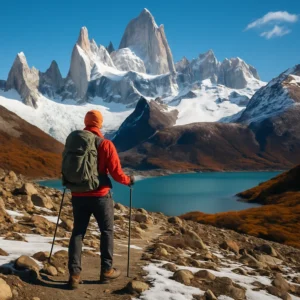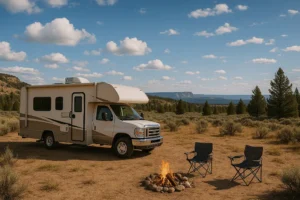A one person tent can be your most trusted partner in the outdoors. Whether you’re backpacking across rugged trails, bikepacking through scenic routes, or setting up a basecamp for a weekend adventure, your shelter matters. A good one person tent should strike a balance between being light enough to carry, tough enough to withstand unpredictable weather, and comfortable enough to feel like a home away from home.
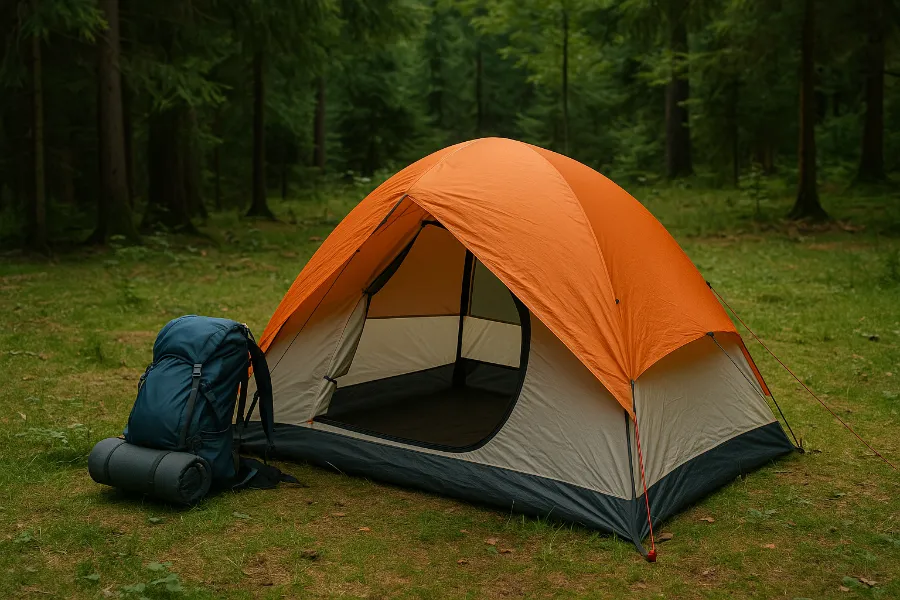
In this guide, we’ll break down what to look for in a one person tent, review some of the best options available, and share practical tips so you can make the right choice for your next adventure.
What to Look for in a One Person Tent
When choosing a one person tent, there are several key factors to weigh. Each will play into how well the tent performs on the trail and how much you enjoy your time outdoors.
Weight and Packability
If you’re hiking long distances, weight is crucial. Ultralight tents (often under 2 lbs / 1 kg) reduce the load on your back, making them perfect for thru-hikers and fastpackers. But keep in mind: cutting weight often means compromising on space or durability.
Space and Comfort
A one person tent doesn’t have to feel like a coffin. Look for smart designs with near-vertical walls, large vestibules for gear storage, and enough headroom to sit upright. Some backpackers even prefer using a two-person tent solo for added comfort and gear space.
Weather Protection and Durability
Your tent is your shield against the elements. A high hydrostatic head (HH) rating—typically 1,200mm or more for the flysheet and 3,000mm+ for the floor—ensures reliable waterproofing. Reinforced fabrics like ripstop nylon or Dyneema offer durability without excessive weight.
Ease of Setup
After a long day on the trail, you don’t want a tent that takes forever to pitch. Freestanding models are often easier to set up and can be moved around before staking, while trekking-pole shelters save weight but may require practice to pitch efficiently.
Price and Value
From budget-friendly models under $200 to high-end Dyneema ultralight shelters costing $600+, one person tents span a wide range of prices. The best option depends on your adventure style and how often you’ll use it.
Best Overall One Person Tents
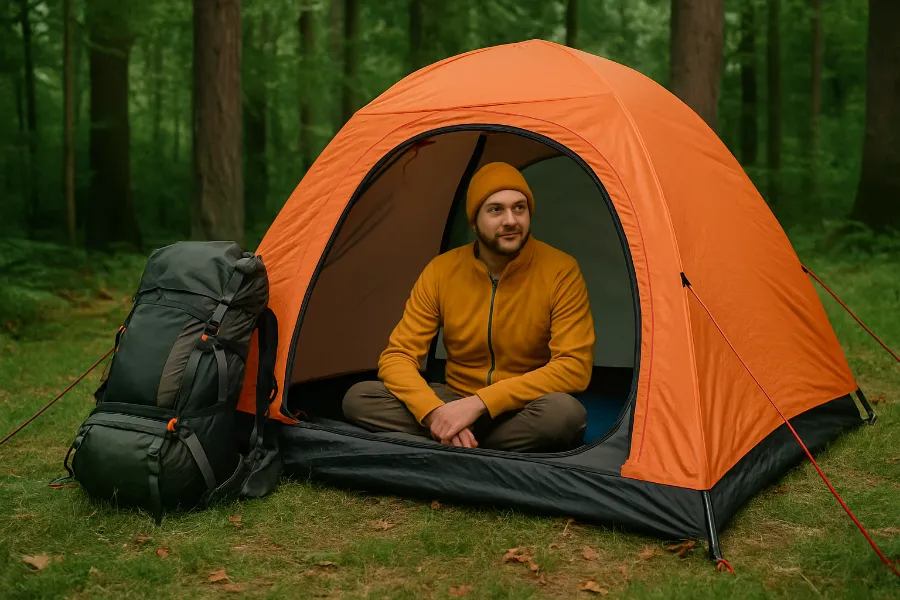
Big Agnes Copper Spur UL1
- Weight: 2 lbs 6 oz (1.1 kg)
- Price: ~$450
- Why it stands out: A premium balance of space, low weight, and clever design features like large gear pockets and awning-style vestibule doors. Ideal for three-season backpacking.
MSR Hubba NX Solo
- Weight: 2 lbs 14 oz (1.3 kg)
- Price: ~$490
- Why it stands out: A modern classic. Freestanding, durable, and with excellent interior space thanks to its hubbed pole system. A reliable choice for long-distance trails.
Best Ultralight One Person Tents
Gossamer Gear The One
- Weight: 1 lb 6 oz (652 g)
- Price: ~$300
- Why it stands out: A trekking-pole shelter beloved by ultralight hikers. Incredibly light and surprisingly roomy for its weight, though condensation can be a challenge in humid conditions.
Zpacks Plex Solo
- Weight: 14 oz (397 g) without stakes
- Price: ~$599
- Why it stands out: One of the lightest shelters on the market, made from Dyneema fabric. Perfect for thru-hikers who prioritize weight savings above all else.
Durston X-Mid Pro 1
- Weight: 1 lb 3 oz (539 g)
- Price: ~$559
- Why it stands out: Innovative diagonal design with excellent space-to-weight ratio and strong storm protection. A cult favorite among long-distance hikers.
Best Budget One Person Tents
Six Moon Designs Lunar Solo
- Weight: 1 lb 10 oz (740 g)
- Price: ~$260
- Why it stands out: A single-wall shelter that offers an excellent mix of weight savings, livability, and affordability. Slightly trickier to pitch, but a great value.
Vango F10 Helium UL 1
- Weight: 2 lbs 10 oz (1.2 kg)
- Price: ~$215
- Why it stands out: A reliable mid-range tent with strong waterproof ratings and a hybrid tunnel design for stability in wind.
Alpkit Soloist XL
- Weight: 3 lbs (1.38 kg)
- Price: ~$170
- Why it stands out: A great value freestanding tent that balances weight, durability, and comfort for budget-conscious backpackers.
Best Four-Season One Person Tents
Fjällräven Abisko Lite 1
- Weight: 3 lbs 10 oz (1.65 kg)
- Price: ~$520
- Why it stands out: A robust tunnel-style tent with reinforced fabrics and multiple ventilation options, designed for harsh weather conditions.
Tarptent Moment DW Li
- Weight: 1 lb 10 oz (737 g)
- Price: ~$749
- Why it stands out: A Dyneema double-wall tent built for year-round use. Lightweight yet tough enough to handle alpine storms.
Snugpak Ionosphere
- Weight: 3 lbs 5 oz (1.5 kg)
- Price: ~$180
- Why it stands out: Affordable and durable, with a stealthy low profile. A favorite among military personnel and stealth campers.
Comparison Table: Top One Person Tents
| Tent Model | Weight | Price | Best For |
|---|---|---|---|
| Big Agnes Copper Spur UL1 | 2 lbs 6 oz | $450 | Best overall |
| MSR Hubba NX Solo | 2 lbs 14 oz | $490 | Classic reliability |
| Gossamer Gear The One | 1 lb 6 oz | $300 | Ultralight thru-hiking |
| Zpacks Plex Solo | 14 oz | $599 | Lightest option |
| Six Moon Designs Lunar Solo | 1 lb 10 oz | $260 | Budget ultralight |
| Fjällräven Abisko Lite 1 | 3 lbs 10 oz | $520 | Four-season durability |
| Snugpak Ionosphere | 3 lbs 5 oz | $180 | Stealth camping |
Tips for Using and Maintaining a One Person Tent
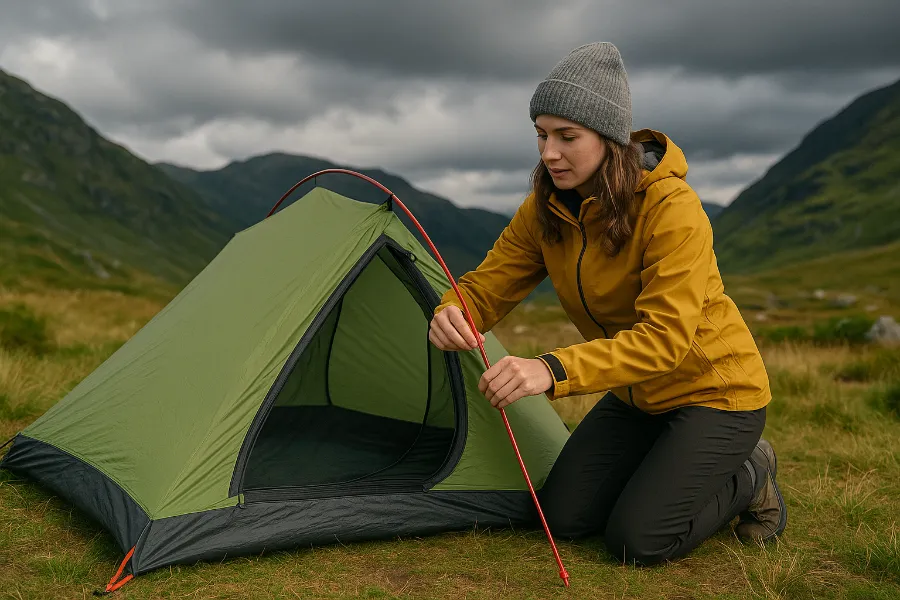
- Practice pitching at home before heading out. Familiarity with your tent can save time (and stress) on the trail.
- Use a footprint or groundsheet to protect the tent floor from sharp rocks and extend its lifespan.
- Ventilate whenever possible to reduce condensation. Open vents and doors when conditions allow.
- Pack it dry when you can. If you must pack it wet, set it up to air out once you reach your next stop.
- Clean and reproof periodically to maintain waterproofing. Mild soap and water are enough for cleaning; avoid harsh detergents.
Final Thoughts
A one person tent is more than just a piece of gear—it’s your safe haven when the wind howls and rain pours. Choosing the right model depends on your priorities: ultralight weight, bombproof durability, or affordable comfort.
For most backpackers, something like the Big Agnes Copper Spur UL1 or MSR Hubba NX will strike the right balance of space, weight, and protection. Ultralighters will gravitate toward Zpacks Plex Solo or Durston X-Mid Pro 1, while budget-conscious hikers might lean toward the Lunar Solo or Alpkit Soloist XL.
At the end of the day, the best one person tent is the one that matches your adventure style, keeps you safe, and lets you sleep soundly under the stars.



